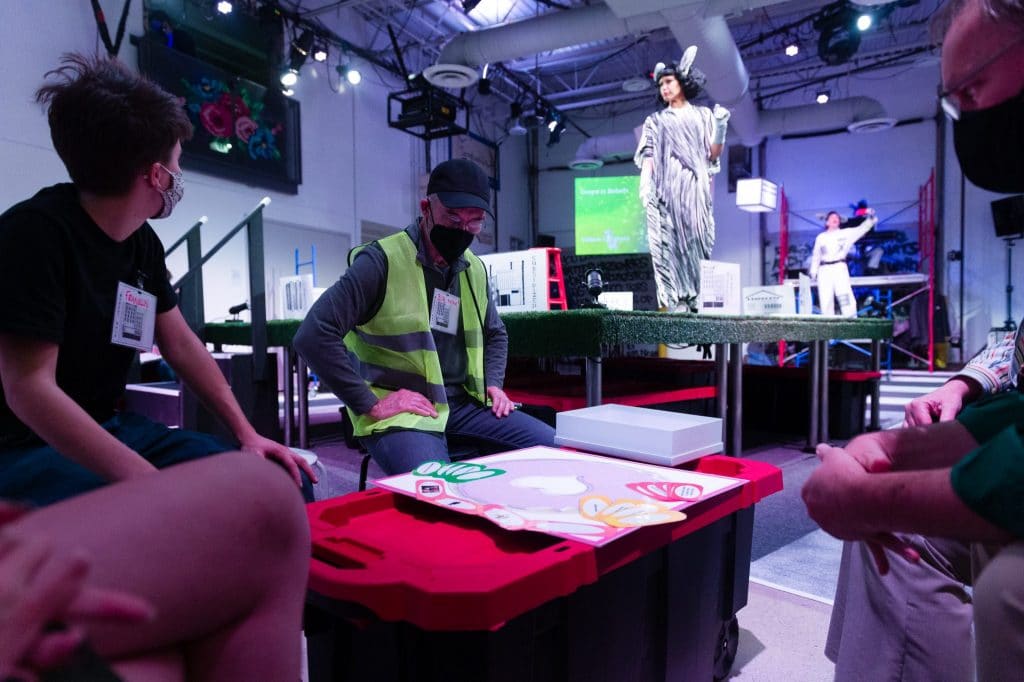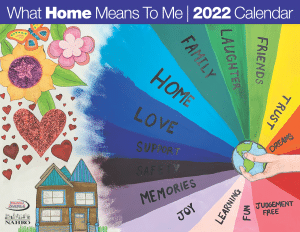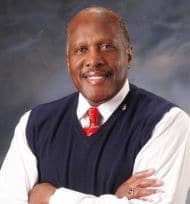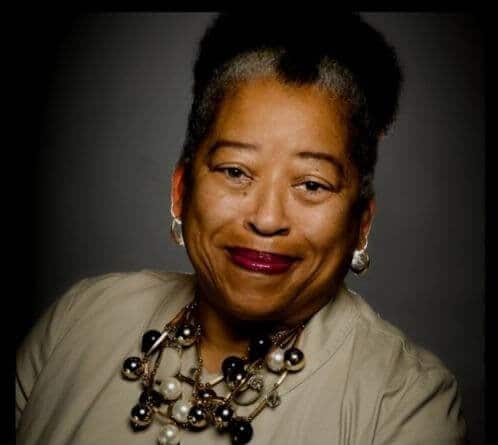Shifting the Affordable Housing Narrative Through Arts and Culture

*This article was previously published in Shelterforce Magazine on Nov. 22, 2021. You can view the story here.
Despite often being intimately close to the families who employ them, domestic workers are often little valued and extremely vulnerable. Racist caricatures such as the mammy trope and the more recent Latina house cleaner often demean and exoticize domestic workers.
The National Domestic Workers Alliance (NDWA) recognizes that harmful stereotypes and portrayals of domestic workers must change in order to win better conditions for those workers. That’s why NDWA lists narrative power along with political and economic power among its top goals.
Changing those kinds of stories often works best via cultural strategies. NDWA has found particular success with film. According to a 2019 case study published by NDWA, “Film, at its best, allows us to immerse ourselves in another person’s identity and perspective: to see through their eyes, walk their path, feel the sting of their tears, let our hearts expand joyfully with theirs. . . . Done right, a film has the power to change not just one viewer’s understanding, but millions of people sharing the same story and meeting the same characters.”
NDWA’s first venture into using film this way was with the 2011 film The Help. With support from FUEL Change, a creative studio, and Participant, the media company that produced the film, NDWA used the popularity of the film to start a discussion about issues facing domestic workers. NDWA gave dozens of domestic workers in-depth media spokesperson training and issued press statements responding to media coverage every time The Help received an award. “As a result, most articles featuring awards for the film’s stars also featured a quote from a domestic worker, yielding unprecedented coverage of domestic worker voices in dozens of major entertainment press outlets,” the case study says.
When Octavia Spencer received a Golden Globe award for her role in The Help a year later, she quoted Dr. Martin Luther King Jr., “All labor that uplifts dignity in this country is worthwhile.” NDWA’s following press release tied that quote to the real-life domestic workers across the country, as well as to the California Bill of Rights for domestic workers that passed the California legislature in 2013. “We got more media attention [at that moment] than we had in all of our bill of rights campaigns combined,” says Ai-jen Poo, director of NDWA.
“Having cultural strategies embedded in a social movement means you can exponentially increase your impact in the real world, because you can leverage culture change strategies with others, and connect mass audiences to policy or technology solutions that are in motion already,” says Poo.
NDWA would put these lessons to action once again in 2019 with the release of Roma, a Spanish- and Mixtec-language movie centered on an Indigenous domestic worker in 1970s Mexico City. Through Participant, NDWA formed a strong, trusting partnership with the film’s director, Alfonso Cuarón, which blossomed into a cultural campaign with the goal of increasing the visibility and value of domestic work and accelerating the adoption of solutions that would tangibly support economic security and dignity for domestic workers. The relationship with Cuarón yielded opportunities to raise awareness about domestic work, such as at the 2018 Los Angeles premiere of the film and at the 2019 Golden Globes, where Cuarón yielded the mic to Poo to connect the film with the domestic workers movement.
Screenings of the film with post-screening discussions in five large cities across the U.S. allowed domestic worker leaders to see and use the film as an organizing tool in their communities. Their hashtag #HeroinesInOurHomes had 8,700 mentions, and Roma was linked to NDWA by celebrities like Kerry Washington.
Changing Housing Narratives
Domestic workers are not the only ones who suffer from harmful narratives. People who face housing insecurity do as well.
The “bootstrap” myth—in which one improves their situation on their own, without outside assistance—has been a pervasively harmful narrative in the realms of housing justice, says Tara Raghuveer, director of the tenants’ rights organization KC Tenants in Kansas City and director of the Homes Guarantee campaign at People’s Action. “It’s the narrative around how [if] you’re housing insecure, if you’re facing eviction, that it’s probably your fault because you’re irresponsible with your money,” she says. Narratives about housing as something you earn, not something everyone deserves can be a major obstacle to attaining tangible change in housing policy, she says, not just because they do not recognize the existence of a problem within the U.S. housing system, but because they constrain what solutions are worthy of being considered.
“There’s a harmful dominant narrative that the only way to solve problems is through the private market,” says Raghuveer, “and that leads to . . . policy design that prioritizes private profits.”
Raghuveer uses the example of rental assistance, which her organization would argue is a lukewarm solution to the housing crisis, little more than a subsidy for landlords. And yet, “the pushback [against attaching conditions to rental assistance for landlords] that we get from even liberals and people who would call themselves progressive is, ‘We can’t do that, because then the private landlords won’t participate.’ And we’re like, ‘Yeah, that’s the point.’” Raghuveer is not interested in landlords who expect access to public money but refuse to be accountable to tenant protections.
How exactly can we begin to shift these deeply entrenched narratives around housing? By shifting the Overton Window. Coined by Joseph Lehman, the term refers to the range of policies that policymakers can propose or support without appearing too extreme to gain or keep public office at a certain point in time, considering public opinion.
In a 2018 Politico article, Lehman pointed out that the most common misconception about the Overton Window is that lawmakers have the ability to shift it. “That is absolutely false. Lawmakers are actually in the business of detecting where the window is, and then moving to be in accordance with it.” The limits of the Overton Window are determined by the political sentiments of the public.
COVID-19 is the kind of external factor than can shift those sentiments. In 2019, 58 percent of Americans ages 18 to 34 held a positive view of capitalism, according to a poll conducted by Axios and Momentive. By 2021, that figure had fallen to 49 percent. In an article about that poll, Felix Salmon, the author of Capital and the chief financial correspondent at Axios, writes, “the pandemic has caused millions of Americans . . . to re-evaluate their political and economic worldview. That’s likely because of two factors: a renewed focus on deep societal inequalities and the tangible upsides of unprecedented levels of government intervention.”
However, the old deeply ingrained narratives that esteem the private market and blame issues of poverty and housing insecurity on personal failure will not die easily.
How to Do It?
The key to intentionally shifting these narratives is to lift up the stories of everyday people who must live with the consequences of the existing narratives. And artists have a huge role to play in doing that in a way that people will engage with.
Rinku Sen is the executive director of the Narrative Initiative, a project that seeks to change and influence narratives surrounding issues of equity and social policy. According to Sen, “Narratives accumulate in the minds of listeners, viewers, readers, consumers.” When thinking about ways to shift narratives around housing, she would consider what types of stories can be told about those who need housing, and how those stories can be told in a way that leads with their agency. As with any story, there must be an underlying theme or idea that permeates the story.
For organizations that are considering working with artists, Sen recommends that they give artists a broad goal to strive for, but allow them freedom to experiment with their art and achieve that goal in their own way. “Something I’ve experienced a lot is, folks will be working on a campaign and they’ll want art that evokes ideas and images that will lead people to support their campaign,” she says. “And that’s not a bad thing to do.” However, Sen explains, when planning a narrative or cultural strategy, it’s best to leave a lot of space for artists to be creative. “If you’re too prescriptive about what you want from them, you’re going to end up forgoing their actual talent, which is to apply their creative mind, and the creative tool to the problem you’re trying, as an organization, to solve in the world.”
Sen references Color of Change as an organization that’s worked hard to get stories of its constituencies—Black American people and communities—embedded into TV shows and film in order to change the kinds of stories that are told on the screen about Black people, the criminal justice system, and policing.
Research has shown that television fiction can be incredibly influential on public attitudes toward certain issues, voting patterns, and how people think and treat others. A 2020 report by Color of Change analyzed 353 episodes from 26 different crime shows from 2017-2018 and found that the genre “advanced debunked ideas about crime, a false hero narrative about law enforcement, and distorted representations about Black people, other people of color and women. These shows rendered racism invisible and dismissed any need for police accountability. They made illegal, destructive, and racist practices within the criminal justice system seem acceptable, justifiable, and necessary—even heroic.” This research highlights the importance of Color of Change’s cultural work.
Color of Change has worked as consultants on film and TV series such as Blindspotting, Surviving R. Kelly, and Grey’s Anatomy, briefing writers on issues like criminal justice, gentrification, and Black families. They’ve also partnered with influential artists like Chris Rock and Keegan-Michael Key on voting rights, John Legend and Common on winning justice, Kendrick Sampson on anti-Black violence, and Matt McGorry on having difficult conversations about race. They’ve pressured FOX to cancel the show COPS, gotten Saturday Night Live to hire more Black women both in front of and behind the camera, and worked with A&E on the reality show Generation KKK to rework content that would’ve glorified white nationalism.
Raghuveer agrees that art plays a significant role in political campaigns. “It’s not just like poster art for an action—not to belittle this because we use it all the time—but there are other kinds of arts and culture strategies that are extremely important,” says Raghuveer. “Our organizing benefits tremendously from having an art perspective in the mix.”
Raghuveer says her main guidance to artists is to plug into existing organizations involved in housing justice. She does caution that artists “should recognize their complicity in some of the systems of harm. Artists and artists communities are often part of gentrifying neighborhoods and displacing communities that had been there before,” she says. “Recognizing some complicity in that and then doubling back down on what exactly the shared stake is between poor and working-class tenants and our communities is a really important foundation to lay before collaborative work can begin.”
Changing Local Narratives
Actors and playwrights are also working on shifting the ways that communities tell their stories. This can be important, as the voices of those directly impacted by policy decisions can often be ignored, marginalized, or generalized into a sweeping, faceless mass that erases personal experiences.
Melissa Nussbaum Freeman is the founder and director of Red Sage Stories/Playback Theatre in Roxbury, Massachusetts. “Playback theater is a form of improvisational theater that invites people in the public to tell personal and true stories, and then actors dramatize those stories using words and movements, metaphor, poetry, and music,” Freeman explains. Actors then ask the original storyteller if their performance accurately got to the heart of their story. “And if we didn’t, we do it over, because the person’s story is really the most important. The person who is the ‘teller’ is the protagonist.”
Typically in playback theater, an audience member shares their personal story with the cast. Then, a “conductor,” someone who helps guide the performance, asks questions to clarify and help actors understand the story. The conductor then signals the art form that actors will use—whether it is poetry or song or simply a skit, for example—and the actors spring into an improvised performance. “You get to have the experience of others embodying your story but also returning it to you with its most important parts highlighted,” she says. “You have shared your story in the world. And it’s not your private story anymore. Change in a community relies on private people making their experiences public and sharing it in the community embracing that.”
Freeman emphasizes the importance of telling people’s stories, and in turn, lifting a community’s voice. “It helps communities become more united because people can hear stories and realize that they’re not alone, and to hear themselves in other people’s stories.”
Red Sage demonstrated the power of storytelling in 2017, during a community meeting attended by Boston city officials as well as community members from the Upham’s Corner neighborhood. The city was planning to designate the area an arts and innovation district. With that designation came hopes for the future, but also fears of displacement that many residents felt were not being acknowledged. Red Sage actors set out to challenge the optimistic narrative of revitalization pushed by the city by legitimizing and validating residents’ concerns and their traumatic past experiences with previous city processes. Actors observed a high-profile community meeting at the Strand Theater, held one-on-one conversations with participants, and performed a 10-minute improv skit dramatizing what they had heard. The play centered around people’s fears and hopes, telling stories that cast a bright light on experiences with displacement and racism. Many community members had expressed frustration that they hadn’t been respected, heard, or valued in the past, which was reflected in the skit. The play was well received by the community.
Freeman says the play helped make people more willing to return to meetings. “It’s pretty hard to just go to a meeting when people are talking and there isn’t a space where you can see yourself,” she says. “But if there’s some artistic way that your voice can be amplified, that’s exciting to people.” But more than that, the play helped change the expectations of how a community should be involved in its own planning process. It marked the beginning of a series of creative, interactive engagements that allowed community members to share their experiences and help shape the future of their neighborhood.
Dreaming Big
Theater can also be a part of inspiring a bold reimagining of the future that housing advocates are fighting for. The Most Beautiful Home…Maybe is an interactive play that is different in every city where it’s performed, developed from conversations and workshops with local housing advocates, activists, and government workers, and employing local photography and stories in its multimedia performances. The performances “juxtapos[e] housing data, Lyndon Johnson, torch songs, and stories of Americans facing home insecurity, past and present,” according to promotional material, and bring “together key players in housing policy to envision a future where everyone has a home.”
Mark Valdez and Ashley Sparks are the theater artists who created The Most Beautiful Home…Maybe, holding it in cities across the U.S.—St. Paul, Los Angeles, Washington, D.C., and Syracuse.
While Valdez has created plays centered around social justice issues previously, the election of Donald Trump made him rethink his strategy for narrative change, which had been to tell stories with a subtle message and simply hope that audience members would be inspired to do something. He realized that wasn’t effective and pondered how to bake social change into the very process of his art so as to not leave it to chance. That’s where the interactive nature of the play comes in.
“You don’t just sit back and watch it,” Valdez continues. “You’re asked to be in conversation constantly with the performers about root causes of housing injustices and about contemporary challenges that folks are trying to address in their cities. And we’re asking you to imagine the future and if you can see a world where there is a housing guarantee.” No two performances are exactly the same because much of the play depends on the various interactions with the audience.
“Something that came up repeatedly in the various conversations that we had with folks in policy is that there’s a lack of imagination,” Valdez explains. “That the day-to-day of their jobs really requires them to think about laws and policies that they feel can get passed, so the thinking gets smaller and smaller because you’re just thinking about what will get approval, what will bypass politics and get us a win. So thinking just gets smaller and smaller and the challenges . . . are just getting bigger and bigger. There’s this hunger in folks who we’re engaging with for imagination, and what we try to do is create opportunities for folks to do that.
“What is it going to take to change the system? Policy shift or culture shift? We have to have both.”
Sparks recalls a discussion with a well-respected elder in the housing field in which she told him, “‘You’ve been doing the work for 35 years and things are not better than when you started.’ And he acknowledged that. Part of it is because we’re losing the culture war right now. Until advocates understand that we have to appeal to the heart, and not just the technical solution, or the kind of what the winnable solution is . . . I don’t know [if] it’s going to get better.”
The idea that housing insecurity is the result of “bad decisions” is still the dominant narrative. In response, “rather than lifting up counternarratives, [housing advocates] have been using data and statistics,” Sparks says. “I’ve heard advocates being very dismissive of the culture piece, and part of me is like, well, is that working for you?”
Sparks clarifies that she feels there’s been considerable success recently in narrative change at the neighborhood level by tenant unions and groups like Right to the City or Moms for Housing. Through persistent community organizing, they’ve been able to demonstrate the power of a collective and show that the status quo of housing precarity can be changed. One example is in Minneapolis where 38 families facing possible eviction banded together to form a cooperative and buy their building from their landlord. “This is a story both about collective organizing and collective ownership,” she says. “This isn’t about one person dealing with a crappy landlord—but rather what happens when we work together AND work in partnership with city resources doing what they should.”
Sparks says that many housing advocates have their heads so deep in the weeds of the day-to-day technical matters that they rarely stop and ask themselves, “Do I actually believe 20 years from now, this is possible and is the work I’m doing right now going to help us get there?” Because of this, Sparks and Valdez hold professional development workshops with housing advocates and provide community engagement and creative facilitation trainings that incorporate writing, music, and movement. “Daydreaming and imagination are profound tools; they whet an appetite,” Valdez explains.
“Our belief is that there is so much focus on the practicality side that no one can even imagine something not practical . . . and if they can they certainly aren’t going to say it out loud to their peers for fear of getting laughed out of a room and dismissed by their colleagues, Valdez says. “We are trying to get folks to remember how to imagine grand, audacious, (maybe impractical) solutions,” Valdez says. “What the world would be like if everyone in this nation had a home, not just a shelter. If we can’t see it, we certainly will never do it.”
Sparks says that there is a noticeable change in audience members when they leave the play. “People who are not familiar with housing policy, I think they come out with a lot of curiosity and questions.” Many express a desire to learn more of the current policies that exist and impact communities.
For housing advocates, The Most Beautiful Home…Maybe leaves them with lasting questions: “Do you want to keep building on the broken infrastructure? Or do you want to build something [new]?”
More Articles in this Issue
Housing America Announces 2022 National Poster Contest Winners
During NAHRO’s Online National Conference and Exhibition in October, 13 winners were announced for the…Jeff Morrison Wins International and Research and Global Exchange Award
Jeff Morrison, Executive Director of the Canadian Housing and Renewal Association (CHRA), was named the 2021 recipient…Thomas Jefferson Wins National Commissioners Award
Thomas Jefferson, the chairperson for the Board of Commissioners of the Fargo Housing and Redevelopment Authority,…Gina Gibson Wins National Emerging Leader Award
Gina Gibson, Director of Asset Management for the Housing Commission of Anne Arundel County in Glen…Elizabeth Glenn Named NAHRO’s 2021 Outstanding Professional of the Year
The National Association of Housing and Redevelopment Officials (NAHRO) named Elizabeth “Liz” Glenn the Outstanding…






